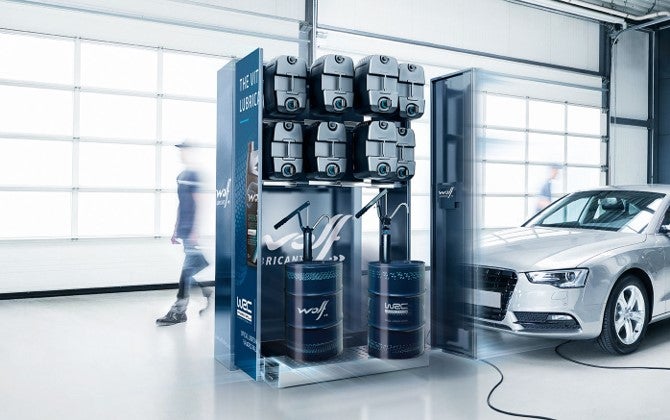
The rise of the automatic transmission, and what that means for lubricants

There is a trend towards more cars with automatic transmissions. Here’s a high-level overview of the most important types, plus our advice when it comes to lubrication.
Invented in 1921 in Canada, it wasn’t until 1940 that Oldsmobile introduced the automatic transmission. Since then, it has gone through many changes. It has also branched out into many different types.
Automatic transmissions are a growing market. There are 2 key trends that are spawning the demand for automatics:
- increasing traffic congestion in cities worldwide;
- drivers’ growing appreciation of a quality driving experience.
Today, there are 4 basic types of automatic transmission that are important to be aware of. Let’s have a quick look at each of them:
1. The conventional automatic
These popular classic automatics use a torque converter to transfer power from the engine to the transmission. They usually contain different sets of gears.
Based on most earlier automatics, the modern conventional automatic uses electronically controlled clutch packs to choose the different “speeds”. It is the most common type of automatic used today, although the use of other types is growing.
2. The Continuously Variable Transmission (CVT)
What mainly separates the CVT from a conventional automatic is the belt. Instead of a set of gears, a belt runs between 2 pulleys to provide a wide range of ratios and a smooth transition between them.
The advantage of a CVT? The engine can be kept at its most efficient speed while the transmission adjusts to changes in load or road speed, which enhances fuel economy. A disadvantage is that CVTs can’t (yet) handle stronger engines.
3. The automated manual
This is a hybrid type of transmission. Essentially, it is a manual transmission, but with computer-controlled, electronically activated mechanisms that carry out clutch and shift actions without the driver’s interference.
Automated manuals’ main advantage is that they’re more efficient. There is no “slip” of a torque converter and no losses from driving an internal hydraulic pump. However, their shifting can feel a little rough.
4. The dual-clutch automated manual
This transmission has 2 gear shafts: one for the odd-numbered gears and another one for the even-numbered gears. This means that the gear below or above the current one is always on the other clutch. When it becomes time to switch gears, the computer engages that other clutch.
This makes the dual-clutch automatic quicker, smoother and more efficient. In fact, automated manuals are often credited with about a 10% increase in fuel economy. And because there is less power loss, automated manuals (especially this type) are used in many high-performance cars today. The DSG is a popular example.
The importance of using the right ATF (automatic transmission fluid)
You’ve seen that these 4 basic types of automatic transmission operate in significantly different ways.
It shouldn’t come as a surprise, then, that it is essential to choose the right ATF for each transmission type and sub-type.
Failing to use the right ATF can result in poor lubrication and overheating, which will at the very least hurt the transmissions’ fuel economy. It might even cause a breakdown of the transmission system beyond repair.
That’s exactly why Wolf offers many different ATFs. If that sounds overwhelming, don’t worry: you can find the right ATF for a vehicle in seconds.
Summary:
- The automatic transmission has, since its invention, gone through many changes.
- The conventional automatic, the CVT, the automated manual and the dual-clutch automated manual are the most important types that exist today.
- It is essential to choose the right ATF for each transmission type and sub-type.

